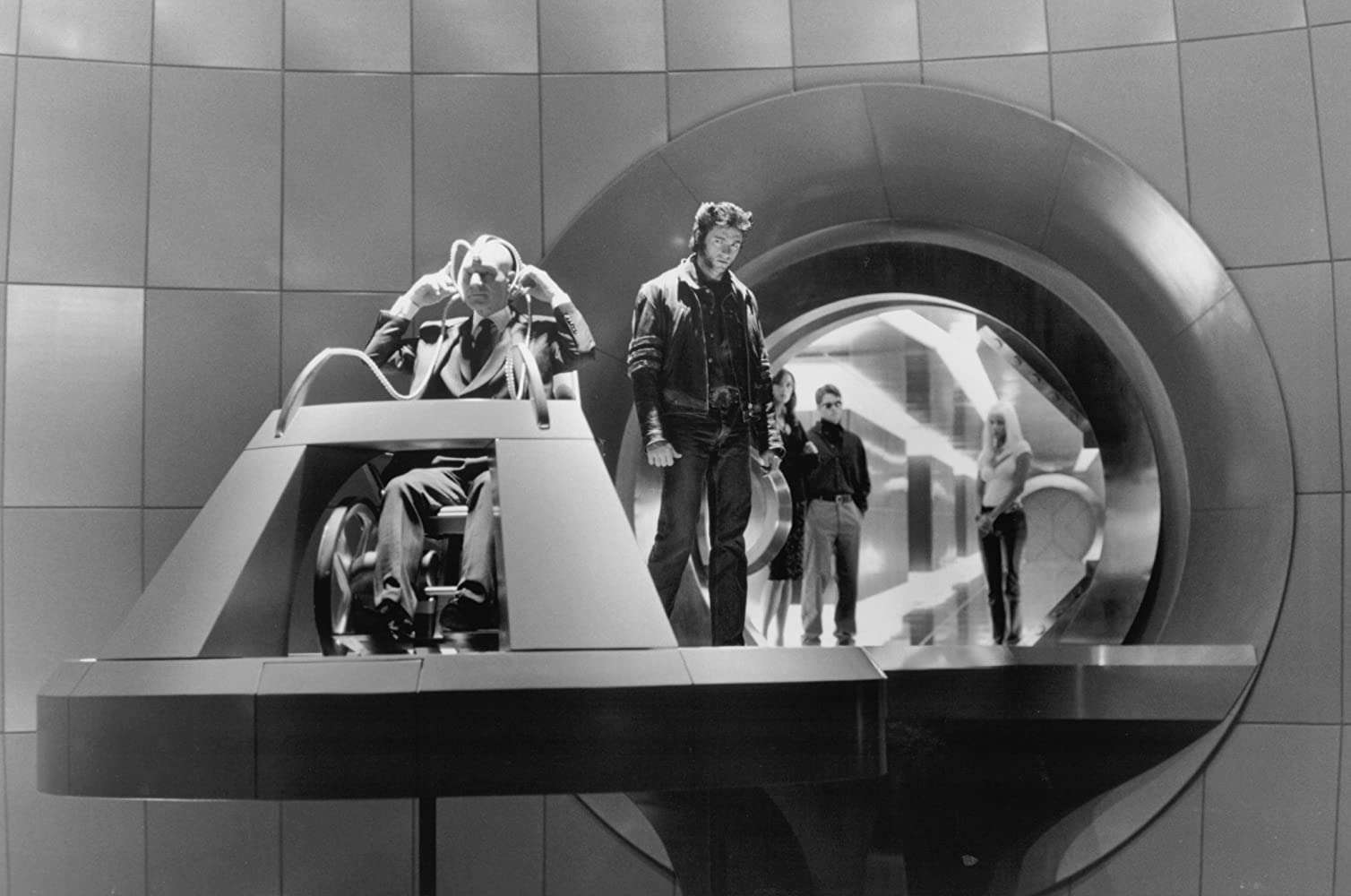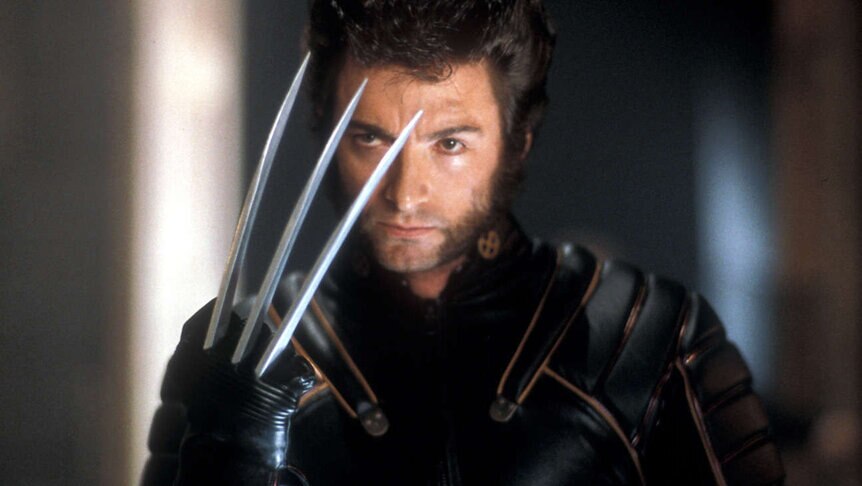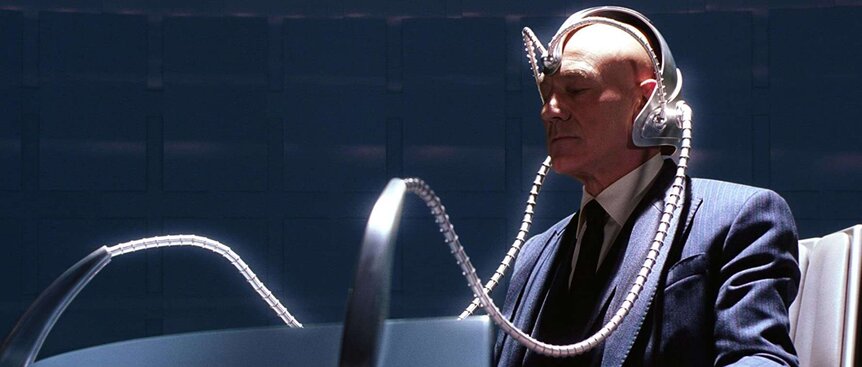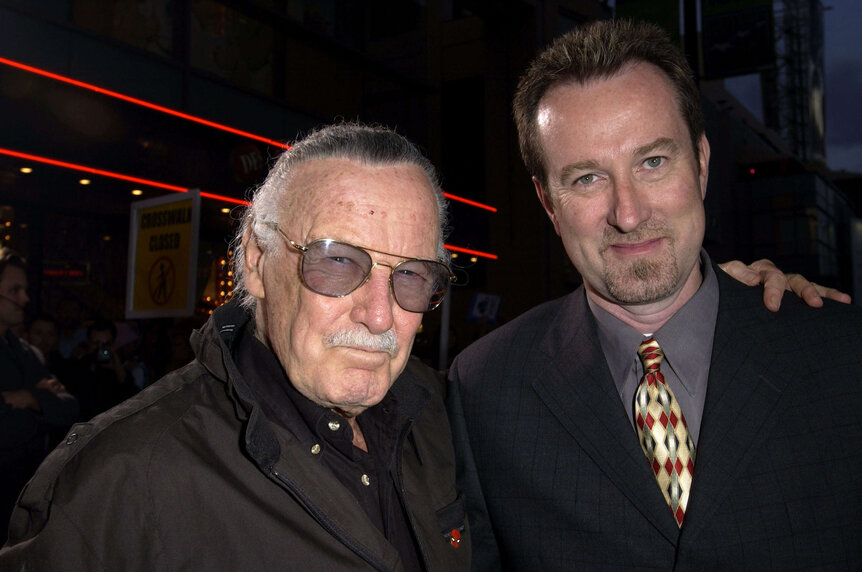Create a free profile to get unlimited access to exclusive videos, sweepstakes, and more!
X-Men producer Ralph Winter talks leather suits and why The Matrix 'terrified' him

Peter Parker owes a debt of gratitude to mutant-kind.
In 2000, all eyes were on the X-Men film. Directed by Bryan Singer, the big-budget gamble — with a price tag of $75 million — introduced audiences to comic book’s most popular team, the X-Men. The ensemble cast featured Ian McKellen, Patrick Stewart, Halle Berry, James Marsden, Famke Janssen, Rebecca Romijn, Anna Paquin, and relative newcomer Hugh Jackman.
But, back then, the superhero landscape was much different. Comic book adaptations were not the cash cows they are today, and were consequently low on the studio priority list. Only the Batman movies had achieved blockbuster status, with the gritty Blade also exceeding expectations. In other words, X-Men had a lot to prove.
To separate themselves from the pack, the X-Men script took a realistic approach. Gone were the cartoony elements and dialogue. Instead, the script grounded the characters and weaved in real-world problems. The movie’s opening sequence focused on a young Magneto trapped in a concentration camp. The project’s biggest social commentary came in the form of the metaphor between mutants and minorities, painting them as outcasts to be feared and hated. Furthermore, Singer traded in the group’s trademark colorful spandex for sleek, black leather.
The success of the X-Men, which grossed $157.3 million at the box office in North America, ushered in a new wave of Marvel superhero adventures, including Spider-Man, Fantastic Four, and Hulk franchises. It also cemented Jackman as a Hollywood star.
To celebrate X-Men’s 20th anniversary this month, producer Ralph Winter took a stroll down memory lane. A veteran of the Star Trek films, most notably Search for Spock, The Voyage Home, The Final Frontier, and The Undiscovered Country, Winter joined X-Men and worked on its subsequent two sequels and the spinoff, X-Men Origins: Wolverine. His resume also includes Hocus Pocus, Mighty Joe Young, Planet of the Apes (2001), and Fantastic Four (2005).
Winter recently spoke with SYFY WIRE about the X-Men’s legacy, costumes, Barry’s infamous wigs, casting Jackman, and more.
How did you become involved in X-Men?
Ralph Winter: I was asked by director Bryan Singer and producer Lauren Shuler Donner to come on board. I didn’t have much of a background in comic books, but my son did, so I had a research library here at home. I had some experience with effects and big movies. Fox wanted me to come on board, too, so it was a sort of a happy marriage and trying to figure it out.
For the longest time, the X-Men property was in developmental hell on and off. How difficult was it to finally get it off the ground?
The story had gone round and round before I got there. I think the casting was helpful. Bryan bringing in Ian McKellen, that made a big difference in getting it off the ground. It was also doing it for a price. Nobody had done a comic book movie at that price point before. Everyone thought Fox was crazy to spend $75 million on a comic book movie. There was a lot of pressure to do it for a price, focus on the characters and not on the effects and, yet, lay out a movie that would be the beginning of a franchise.
I had worked on the Star Trek movies with a lot of characters, several characters, and it’s always tricky to keep a busy role for everybody. We figured that out, the development was good, and Bryan was smart about it. We got off to a good start and I think we made an even better movie on the second one.
Was casting in place when you joined the movie?
It happened as we were prepping. Ian was the first one and then the rest of them happened. Michael Jackson came in and wanted to be Charles Xavier. Shaquille O’Neal came in. He wanted to be Xavier. I remember Shaq walking through the door. I shook his hand and my hand disappeared. The guy is enormous. There was good conversation. Then, Michael Jackson came through. Not shaking hands at all, of course, but very pleasant and polite. He was fascinated with Charles Xavier, as well.
Of course, Dougray Scott was up for Wolverine. But he had an accident on Mission: Impossible II. We were worried that he might not be up to the stunts he was required to do, so we kept looking. But we thought Dougray might be the guy. It just worked out differently. Good actor and wish him the best, but it didn’t work out.
You had to recast the Wolverine role a few weeks into production. Was there a sense of panic at the time?
There’s always panic when you don’t have all the cast and you turn the camera on. We probably made a different choice than Dougray rather than him backing out. I don’t remember the politics from 20 years ago. I remember he had some ribs that were damaged, and he was recovering.
That was in August and we were going in September. I think everyone felt it was too much of a risk for him not be ready or able to do the stunts we were envisioning. The search kept going. He was never really cast with a deal in place, that I remember. We had to keep looking and the last-minute choice came from London, where Hugh Jackman was doing Oklahoma!
What impressed you about Hugh in those early days?
You forget that he was a child actor. He worked his tail off for a lot of years. The opportunity to be in something that was a major studio film in the U.S. was very exciting for all of us, and for him especially. He brought a lot of enthusiasm and that rubbed off on a lot of people.
Beast and Nightcrawler were a part of the earlier drafts before being abandoned due to budget restrictions. In what ways did the narrative evolve over time?
You would probably have to go to Lauren about some of that, and Bryan for some of that. There was a long development process before I came on board. I came on board about six months into it. Everything was relatively in shape. We had to jettison some things... the Danger Room, other characters, Gambit... it was all favorite characters everyone had jammed in.
In the beginning, it’s hard to narrow the course so that you have enough characters to make it interesting, but not too many that you can’t spend time introducing every character, every character’s power, and every character’s journey in the first installment... without making it boring. Even the large number we had was right on the edge of spending too much time setting them all up.
They did a good job of introducing new characters as each movie came after that. We weren’t thinking of multiple movies necessarily. We were just trying to get the first one out, make it successful and do it for the price point.
The release date got pushed up. Suddenly, that big-budget movie needed to be edited and in theaters within six months. In what ways did the time-crunch alter the final product?
There were always changes. Bryan was always rethinking a bit as we went. There were page changes along the way. There was pressure to get the effects done. We were trying to do stuff that was somewhat innovative and fun for that period of time. Comic book movies and those kinds of effects hadn’t really been done before. Some of the technology wasn’t there.
We had all gone to see The Matrix [in] the summer of 1999. I remember all of us going to the Fox Theater in Westwood, sitting there with some of the studio executives, and being really amazed by Matrix and terrified. “That’s the new bar. We have to raise it above that. How do we do that with our story and our budget?” There’s always that pressure to get it done, make it work, and polish it.
I don’t even know if we had time to preview it with an audience. And we were trying to keep it under wraps. We were trying to keep the wardrobe and sets secret and let it explode on opening day.
Speaking of wardrobe, the movie opted for leather over the colorful comic book threads. How much discussion went into going that route?
At that time, we did feel like we did a good job. We limited the amount of time in the wardrobe. Of course, there’s a joke in the movie about yellow spandex, which was directed at the fans. It wasn’t to iterate them but to say “Hey, we hear you. We understand what you want. We understand you don’t like the idea of Wolverine being taller than 5'4". We understand you’d rather have everybody in the traditional garb. But we also have to make a movie that reaches a wide audience to justify the budget."
The trick is always to bullseye the hardcore Marvel/X-Men fan, but do it in a way that doesn’t alienate an average moviegoer that might enjoy, or start to enjoy, these types of stories.
Google this movie and there are whole articles and criticisms on Storm’s hair and Halle Berry’s wigs. How pleased were you with the final product?
I wasn’t happy. I was happy as we got to later movies with her hair shorter. I always thought a short hairstyle on her was better. I think Bryan wanted the hair to move, and to feel all of that. It’s funny how these movies are all about hair. Even in the third and fourth movie, we were talking about a different Wolverine hairstyle. It’s like, “Guys, what are we doing? Who can be confused with a guy who has a funny haircut, claws that come out of his hands, a dark past and kills people? Nobody is confused about it.”
But it was also changing, and that’s why Halle’s hair changed several times. I think everybody, as the movies were being made, were trying to refine it, make it more sophisticated, make it more part of the story. Hairstyles often reflect the date the movies were made. There were endless discussions about hair for all the characters, but certainly Storm and Logan’s.
When was the last time you saw X-Men and what do you think about it looking back 20 years?
Probably five years ago since I’ve seen it. I think it holds up. It does age a little bit in terms of some of the stuff that’s there. I look at some of the things we pulled off, like Magneto and the cops. Some of that worked out really well. Some sequences could be better.
On a whole, it feels pretty good as a starting movie. I feel better about X-Men 2. We had a bigger budget. We had more flexibility. A second time with the same director, crew, and cast, you can speed along. You know what people’s strengths are and you can play to those. But it plays OK. I’m proud of X-Men. Happy to have my name on it.





























